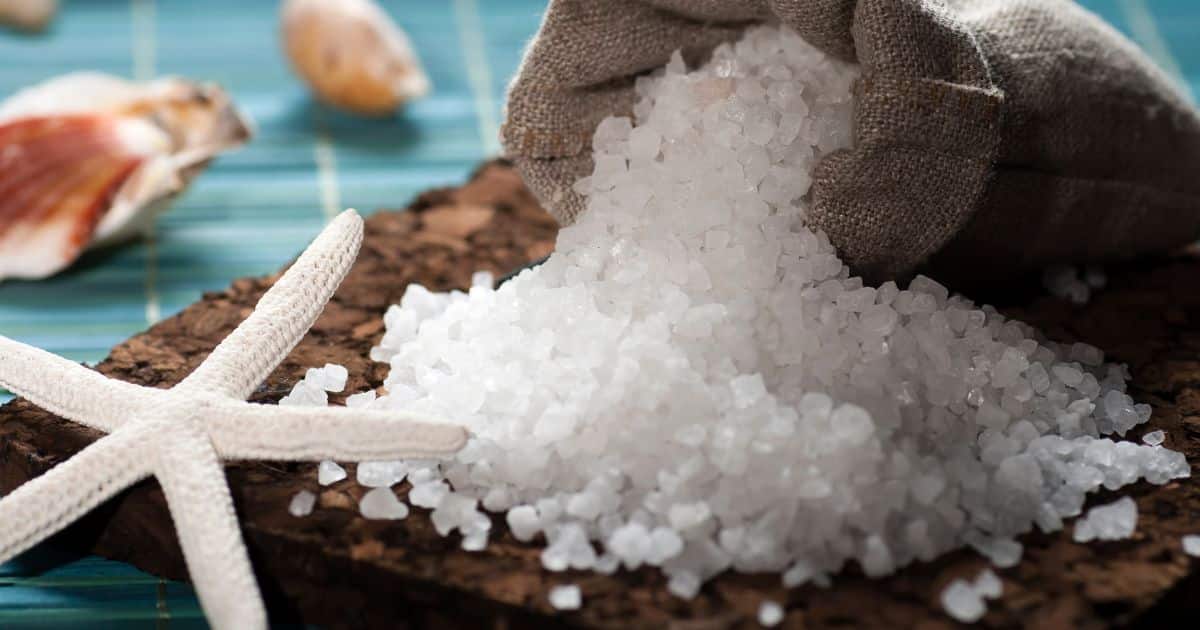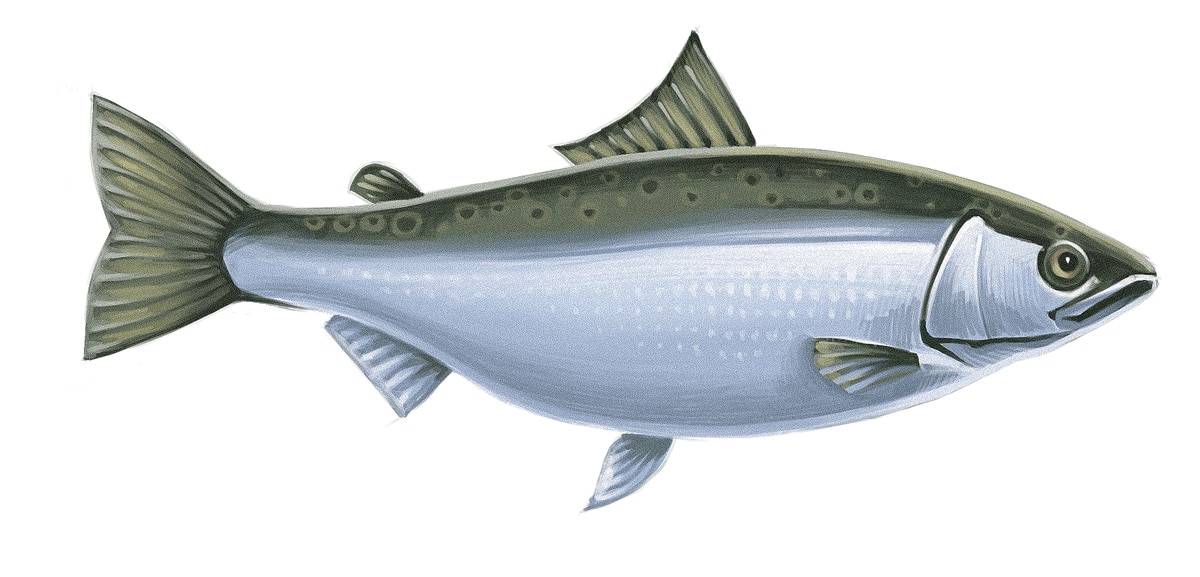In the Paleo world, we know that all the hysteria over salt simply isn’t justified; there’s no evidence that salt or sodium from home-cooked foods has any health dangers. In fact, eating enough salt has significant health benefits, and eating too little salt is actually quite dangerous. But what about the type of salt? Is it worthwhile paying for special sea salt or rock salt, or will the 99-cent box of iodized table salt do you just as well?

Nutritionally, proponents of sea salt like to boast about how many minerals it has – with the assumption that since it’s “natural” or “unrefined,” it must be more nutritious. But actually, if you look at the real mineral content, you’ll find that the amount of these minerals in sea salt is very small unless you’re actually buying incredibly expensive luxury salts and cooking with them the way you’d cook with table salt.
Taste-wise, sea salt does have some interesting flavors and it’s great for adding to special meals for a different flavor. And there’s nothing wrong with it – it’s perfectly healthy to eat. But it’s not a magical nutrient supplement and if you can’t afford it, regular table salt is just fine.
What Is Sea Salt?
All salt starts out as “sea salt” in the sense that it all comes from the sea. But for grocery shopping purposes, “sea salt” means unrefined salt. After being removed from the sea, regular salt is refined to remove any impurities and ground into absolutely uniform grains, but sea salt is more coarsely ground and left a little bit imperfect on purpose. That’s why regular salt is always the same pure white and has very small grains, while sea salt has different colors (red, black, gray, or yellow) and larger grains.
Yes, technically this makes table salt “more processed” – but unless there’s evidence that some step in the processing makes the salt less nutritious, calling it “processed” means nothing. Think of table salt like baby carrots and sea salt like ordinary carrots. Baby carrots are “processed” in the sense that they’ve been cut up into pieces the same size while regular carrots get left in whatever uneven sizes they grew in: does that make the baby carrots unhealthy?
But what about the anti-caking agents in table salt? Most table salt does contain at least one anti-caking agent to make the salt pour smoothly, but there’s no peer-reviewed scientific evidence that any of these additives cause harm. (Really – a PubMed search for “salt anti-caking” turns up two studies neither of which have anything to do with dangers: check it out yourself!)
Anti-caking agents aren’t automatically dangerous because they’re “chemicals.” Salt itself is made out of two “chemicals,” sodium and chloride. Water is a chemical. Claiming that you “don’t eat chemicals” is meaningless. Repeating scary-sounding “chemical names” of anti-caking agents is not proof that they do anything bad (dihydrogen monoxide, anyone?).
At this point, we simply don’t have evidence that any of these additives cause harm. Yes, even for the aluminum-based ones: the amount of aluminum is so tiny that it simply doesn’t cause harm in normal amounts. Aluminum toxicity is a serious question, but that aluminum isn’t coming from anti-caking agents in salt.
Yes, it’s always possible that there is harm going on and we simply haven’t discovered it yet. But until someone actually provides proof that these chemicals are dangerous in the tiny amounts ingested from salt, the wild claims that they cause cancer and autism are premature at the very best.
Sea Salt vs. Table Salt: Nutrients
But what about the minerals? Doesn’t removing the “impurities” in sea salt also remove important minerals, putting refined table salt in the same “nutritionally bankrupt” category as refined grains?
Sodium
The first nutrient to note with salt is always sodium. Sea salt contains just as much sodium as regular salt. If it’s sodium you’re worried about (which isn’t necessarily the thing to be worried about in the first place), sea salt isn’t any healthier.
Other Minerals
But what about other nutrients? It’s a common claim that “sea salt contains ________ minerals not found in regular salt” (fill in the blank with some number, usually 84). But here’s the thing: in most sea salts, the amount of those minerals is so utterly tiny that it barely makes a difference. Sure, technically, sea salt might contribute .001% of your daily calcium compared to a refined salt that contributes 0%. But does it really matter?
One group of researchers actually tested 45 different varieties of table salt, sea salt, and salt substitutes. Their results showed that:
- For a few, rare and expensive, sea salts, mineral content is higher.
- For most of the boxes labeled “sea salt” at the store, mineral content is not significantly
Just for example, take magnesium. If you wanted to get magnesium from sea salt, your best choices would be (with country of origin):
- Korea Bay Gray Salt (Korea)
- Kala Namak (India)
- Pangasinan Star fleur de sel (Philippines)
- Flor de Sal de Manzanilla (Mexico)
- Kilauea black salt (Hawaii)
All these salts provide significant amounts of magnesium – but how often does anyone really buy Pangasinan Star fleur de sel? It’s incredibly expensive and difficult to find. Even if you could find it, you’d have to be pretty darn wealthy to afford a teaspoon every day!
The same thing is true for calcium, potassium, and iron: a few, rare sea salts have significant amounts, but most of the “sea salt” that you buy at the store isn’t significantly more nutritious than ordinary table salt.
Iodine

The one notable mineral that doesn’t fit this mold is iodine – but here, it’s the generic, off-the-shelf table salt that wins.
Iodine is a crucial nutrient for healthy thyroid function, among other things. It’s found naturally in seaweed, fish, and many other sea foods, but not in unrefined sea salt. Sea salt contains almost no iodine.
Before the 1920s, many people around the world suffered from goiter, a thyroid disease caused by iodine deficiency. In the US, goiter was especially common towards the middle of the country, where fish and other seafood are rarer.
When they realized that getting enough iodine could prevent goiter, public health authorities started to use fortified salt as a convenient, widespread, and cheap way to distribute supplemental iodine. Basically, before being packaged, the salt is sprayed with potassium iodate, which adds an iodine supplement without changing the taste. And despite some evidence that iodized salt loses potency over time, the iodine campaign obviously helped: today, goiter is nearly unheard-of in the developed world.
So the iodine fortification of regular salt is actually quite valuable and serves to prevent a serious disease. If other iodine-rich foods like fish, seaweed and dairy aren’t part of your regular diet, then iodized table salt might be filling a crucial nutritional need.
Nutrition Isn’t Everything!
So if sea salt isn’t really any more nutritious or safer than regular salt, why do so many people love it? Probably because of the taste! Even the tiny trace amounts of minerals in sea salt are enough to give it an interesting taste difference from regular salt, which can add some unique flavor to your food.
Taste is a perfectly legitimate reason to eat sea salt instead of regular salt, especially if you're using it somewhere you'll actually appreciate the taste. Sea salt sprinkled over an avocado is delicious. Sea salt on chocolate is even better. That’s how to cook with the super-expensive fleur de sel or pink rock salt. Don’t use it to brine your ham; use it as a luxury “finishing salt” where you’ll actually enjoy the flavor!
Summing it Up
In the context of an overall healthy diet, sea salt is really more of a bonus: it tastes interesting, and it can make your food pop a little more. On the other hand, if you can’t get (or afford) expensive sea salt, there’s no reason to worry. You can get everything you need from other sources and sea salt should really be the last place to blow your budget if money is tight. Cooking with ordinary salt is still Paleo and won't ruin your health or leave you with any nutrient deficiencies.





Leave a Reply